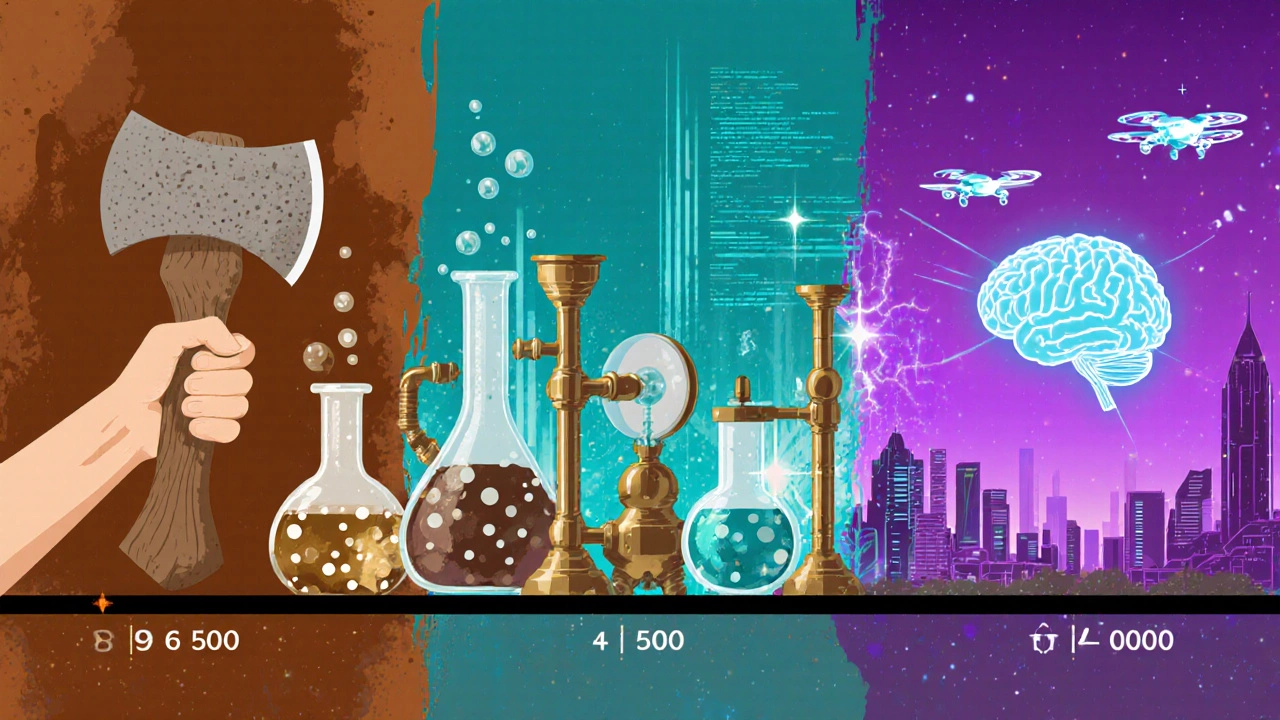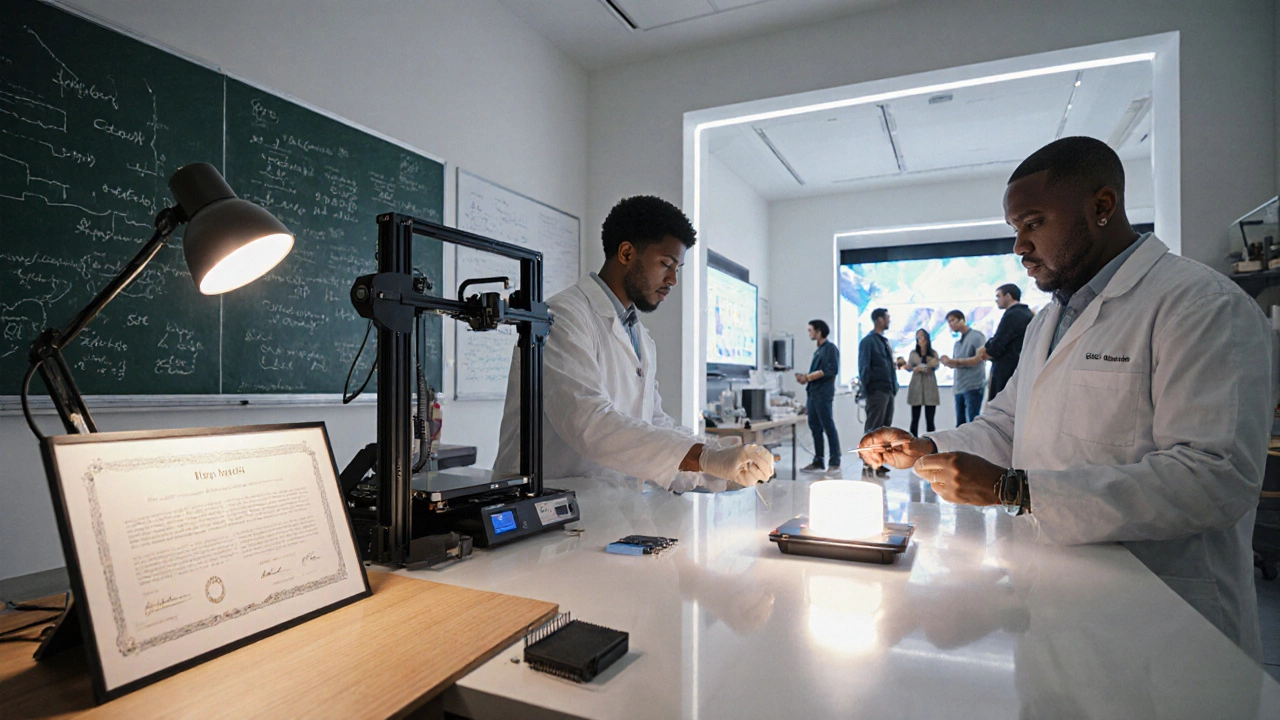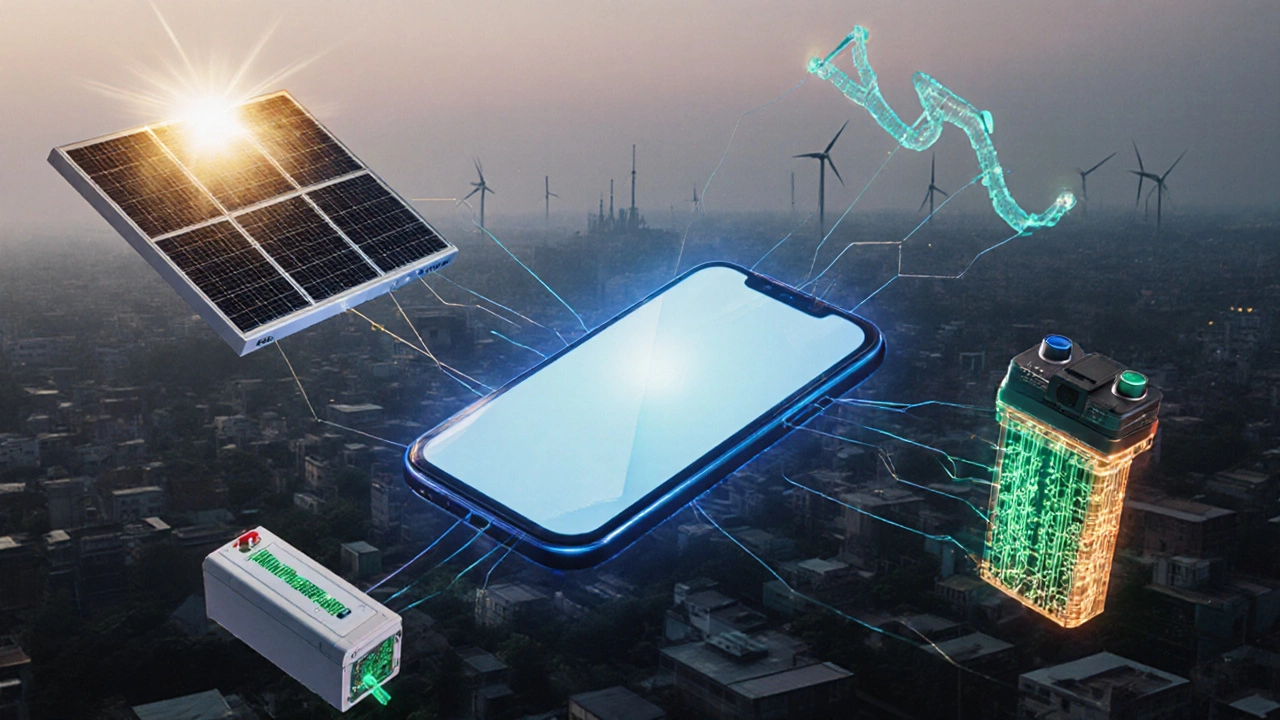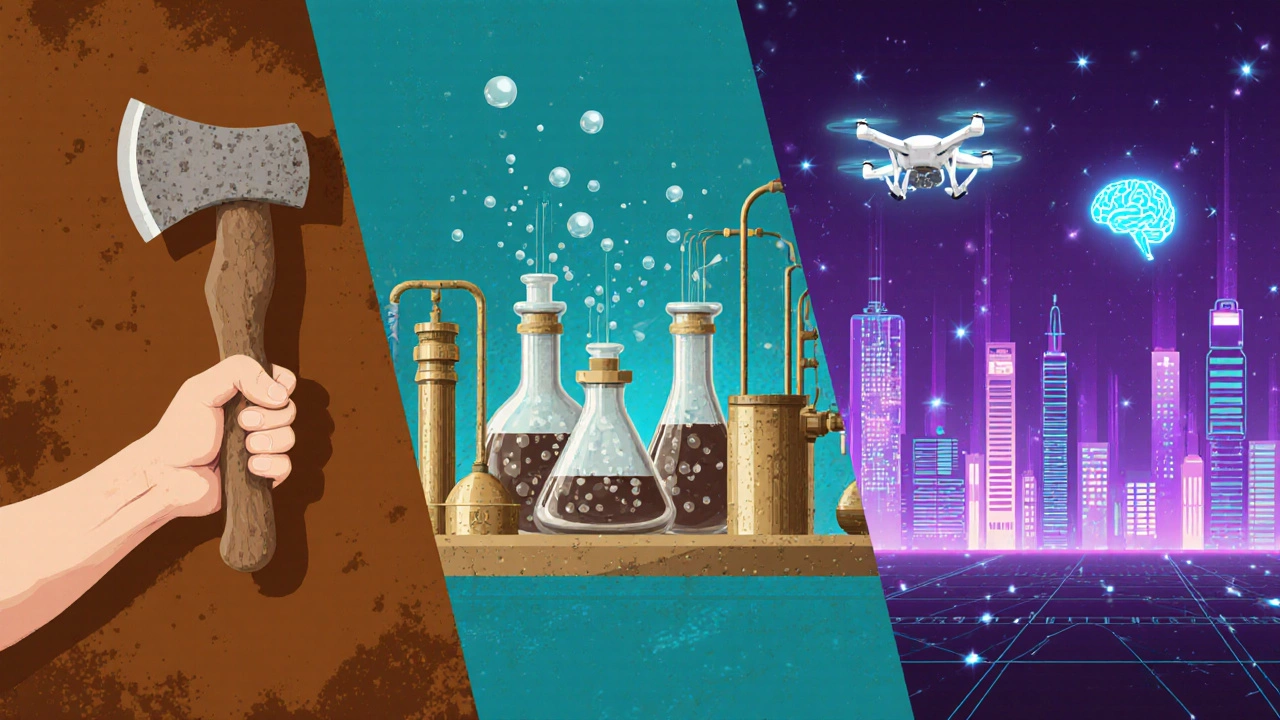What Is Technology? Definition, Types & Real‑World Examples
 Oct, 14 2025
Oct, 14 2025
Technology Classification Challenge
Technology Categories Quiz
Test your understanding of technology categories by matching real-world examples to their correct type. Select the best option for each example.
When you hear the word “technology,” you probably picture a smartphone or a solar panel. But the term actually covers a huge range of tools, processes, and knowledge that help societies solve problems and create value. This article breaks down what technology really is, how it moves from the lab to the market, and gives everyday examples you can recognize in your own life.
Key Takeaways
- Technology is the application of scientific knowledge to solve practical problems.
- It moves through a lifecycle: research → development → transfer → commercialization.
- Types include information, energy, biotechnology, materials, and more.
- Real‑world technology examples illustrate how abstract concepts become tangible products.
- Successful technology transfer needs clear ownership, stakeholder alignment, and protection such as patents.
What Is Technology?
Technology is a system of tools, methods, and knowledge that humans create to meet specific needs or solve problems. It ranges from simple stone tools used by early humans to complex AI algorithms processing billions of data points today. In the modern sense, technology often implies a blend of scientific insight and engineering design that results in a usable product or service.
Everyone interacts with technology daily-whether you’re using an online banking app, turning on LED lighting, or taking a medication that was engineered using biotech methods. Understanding technology’s core definition helps you see the hidden connections between disparate innovations.

How Technology Evolves: From Research to Transfer
Turning an idea into a market‑ready product rarely happens overnight. The journey can be mapped as a series of stages, each with its own actors and risks.
- Research: Scientists explore fundamental questions. Discoveries at this stage are usually published in academic journals and form the knowledge base for later work.
- Development: Engineers and designers apply research findings to create prototypes. This phase involves iterative testing and refining.
- Technology Transfer the process of moving an invention from a research setting to a commercial environment: Universities, research institutes, or government labs partner with businesses to share the know‑how.
- Patent a legal right granting exclusive control over an invention for a set period or other intellectual‑property protection is secured, ensuring the creator can capture value.
- Commercialization bringing the product to market, scaling production, and generating revenue: This step often involves marketing, distribution, and after‑sales support.
- Stakeholder any individual or organization with a vested interest in the technology’s success alignment-investors, regulators, end‑users-becomes critical for sustained adoption.
Each stage carries its own challenges. Missing a patent, for example, can open the door for competitors to copy the invention, while poor stakeholder communication can stall funding.
Common Types of Technology
| Category | Primary Use | Key Example | Typical Impact |
|---|---|---|---|
| Information Technology | Data processing & communication | Cloud computing platforms | Improved productivity, new business models |
| Energy Technology | Generation, storage, distribution of power | Solar photovoltaic panels | Reduced carbon emissions, energy independence |
| Biotechnology | Manipulating living organisms | CRISPR gene editing | Advances in medicine, agriculture |
| Materials Technology | Developing new substances with unique properties | Graphene composites | Stronger, lighter products |
| Nanotechnology | Control of matter at the nanoscale | Nanoparticle drug delivery | Targeted therapies, higher efficiency |
These categories often overlap. A smart electric car, for instance, blends information, energy, and materials technologies into a single product.

Real‑World Technology Examples
Seeing theory put into practice helps cement the definition above. Below are a handful of everyday items that showcase how technology can reshape lives.
- Smartphone: Combines information technology (apps, cloud sync), energy technology (battery management), and materials technology (gorilla glass) to deliver a pocket‑size computer.
- Solar rooftop panel: Harnesses sunlight (energy technology) and uses advanced semiconductor materials to convert photons into electricity, lowering household energy bills.
- CRISPR‑based diagnostic kits: Apply biotechnology to detect pathogens at the molecular level, enabling rapid disease screening in clinics and field labs.
- AI‑driven chatbots: Leverage artificial intelligence (a branch of information technology) to provide 24/7 customer service, reducing wait times and operational costs.
- Electric vehicle (EV) battery packs: Integrate energy storage technology, advanced materials, and thermal‑management systems to deliver longer ranges and faster charging.
These examples illustrate the spectrum from simple tools to complex systems, all rooted in the same core idea: using knowledge to create value.
Why Technology Transfer Matters
Without a bridge between labs and markets, many breakthroughs would stay on whiteboards. Technology transfer unlocks economic growth, creates jobs, and addresses societal challenges such as climate change and health crises. Governments often fund research with the explicit goal of generating commercializable outcomes, making effective transfer a policy priority.
Successful transfer also improves the return on public investment. For every pound spent on research, the resulting products can generate multiple pounds in tax revenue, export earnings, and improved public services.

Pitfalls to Avoid When Moving Tech to Market
- Ignoring Intellectual‑Property Rights: Failing to secure patents or trade secrets can let competitors copy the invention, eroding potential returns.
- Misreading Market Needs: A brilliant technology that solves a problem nobody cares about will struggle to find buyers. Early market validation is crucial.
- Underestimating Regulatory Hurdles: Especially in biotech and energy, compliance can add years and millions of pounds to timelines.
- Poor Stakeholder Communication: Investors, regulators, and end‑users need clear, consistent information. Misalignment can stall funding or lead to costly redesigns.
- Scaling Too Fast: Jumping from prototype to mass production without robust quality control often results in product failures and brand damage.
By anticipating these traps, innovators can smooth the path from idea to impact.
Frequently Asked Questions
What is the difference between technology and innovation?
Technology is the tangible tool or system created from knowledge, while innovation refers to the process of applying that technology in a new or improved way to create value.
How does technology transfer typically work?
It usually starts with a research institution licensing a patented invention to a company, followed by development, scaling, and market launch, often supported by legal, financial, and regulatory assistance.
Can public funding agencies require technology transfer?
Yes, many grant programs include clauses that mandate commercialization plans or licensing agreements to ensure public money leads to societal benefits.
What role do patents play in technology transfer?
Patents give the holder exclusive rights, making the technology attractive to investors and companies because they can protect market share and recoup R&D costs.
Why do some technologies fail despite strong research?
Failure often stems from poor market fit, regulatory barriers, insufficient funding, or neglecting user experience during development.